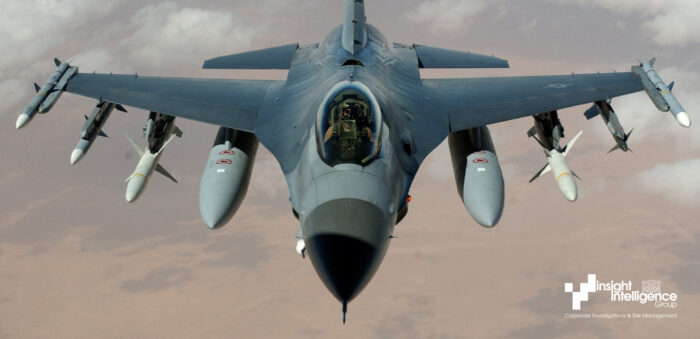Fear, anxiety, and political tension dominated the Cold War, which was characterised by intense rivalry between the two superpowers, the United States and the Soviet Union.
The race to build the most powerful and cutting-edge weapons was at the heart of this competition. Both sides have spent billions of dollars on R&D, pushing the boundaries of military technology and engaging in a high-stakes game.
‘Arms race,’ you say?
During the Cold War, the two superpowers, the United States and the Soviet Union, engaged in a furious armaments race.
Both sides were fighting to maintain the balance of power, which included building military capabilities, particularly nuclear weapons and delivery systems.
As a result of this race, both sides produced increasingly powerful and complex nuclear weapons, resulting in a massive buildup of nuclear arsenals. The arms race had an impact on several military technologies, including tanks, aeroplanes, and other armament systems.
What was the significance of the competition?
The main motivator of the arms race was the Cold War-era strong political and ideological confrontation between the United States and the Soviet Union.
Both sides competed for global economic supremacy, and deploying military power was seen to be crucial to achieving that position. They suspected the other was aiming to acquire a military advantage, which fueled the arms race.
The development of nuclear weapons by the US and the USSR also contributed to the arms race as both sides wanted to maintain a balance of forces to deter the other from launching a nuclear attack.
An explanation of how it all began
Following World War II, the United States and the Soviet Union emerged as the world’s two dominant superpowers, laying the groundwork for the current arms race.
Following the war, international relations shifted into a new era marked by bitter political and ideological conflict between the two sides.
In their opposing perspectives of the post-World War II era, the United States and the Soviet Union backed capitalism and democracy, as well as socialism and communism, respectively.
Because each side perceived the other as a threat to its own security and way of life, tensions quickly arose between them.
When nuclear weapons were produced in the 1940s, the rivalry between the United States and the Soviet Union took on new significance. During the war, the United States developed an atomic bomb, while the Soviet Union successfully tested one in 1949.
This marked the beginning of a new era in which both sides tried to maintain the balance of power by building increasingly powerful and complicated nuclear weapons.
Both parties have made large investments
As both sides developed increasingly advanced nuclear weapons and delivery methods in the 1950s and 1960s, the arms race became more heated.
The United States developed the Intercontinental Ballistic Missile (ICBM), a long-range missile capable of delivering a nuclear payload anywhere in the world.
In response, the Soviet Union developed its own ICBMs as well as a large fleet of nuclear submarines capable of firing missiles from below the surface. The arms race has had an impact on other aspects of military technology. Both sides developed new tanks, aircraft, and other weaponry in an attempt to outmanoeuvre the other.
While the US and its NATO allies created a substantial military presence in Europe, the Soviet Union maintained a massive permanent army and deployed troops all over the world.
How everything ended
Both sides felt the effects of the arms race. The US and the Soviet Union spent billions of dollars on military research and development, diverting funds from other areas such as education, health, and welfare.
The looming prospect of nuclear war created an atmosphere of fear and anxiety on both sides of the Iron Curtain, as populations on both sides confronted the possibility of a cataclysmic global tragedy.
The arms race peaked in the 1980s, when the United States and the Soviet Union accumulated unprecedented nuclear arsenals.
However, the enormous costs of maintaining these arsenals, along with a growing understanding of the dangers of nuclear war, resulted in a shift in priorities.
In the late 1980s and early 1990s, the United States and the Soviet Union began debating weapons control accords, which culminated in the signing of the Strategic Weapons Reduction Treaty (START) in 1991.
I have a question for everyone: Has everything come to an end?
The Implications for the Modern World
For decades, the Cold War armaments race dominated the era, impacting international relations and global politics.
Although it had a significant impact on both the US and the Soviet Union, it also had broader global implications, raising questions about the role of military strength in international affairs and the need of diplomacy and arms control in conflict prevention.
Is the race for weapons over?
It’s not.
Other countries were participating, and now, in addition to Russia and the United States, we have super powers like China and India, as well as small countries like North Korea and Iran, that have built nuclear weapons.
We can only wait and watch what the next phase brings and hope that logic triumphs.



